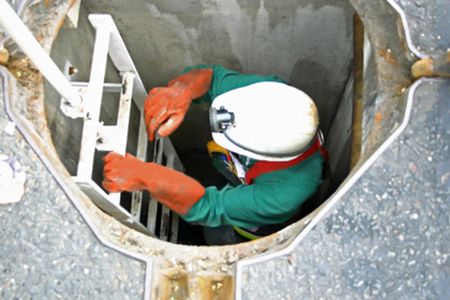Sewage in the sewers will decompose to produce a variety of toxic and harmful, flammable and explosive gases, such as Hydrogen Sulfide (H2S), Methane (CH4), Carbon Dioxide (CO2), and sometimes Carbon Monoxide (CO), and so on. Once these gases are leaked, they can easily explode when encountering open flames, and cause poisoning of personnel, which is extremely hazardous. If we rush into the sewer operation, the staff can easily faint and be poisoned, resulting in safety accidents. Therefore, we need to use a gas detector that can detect dangerous gases in the sewer. Gas monitors play a vital role in ensuring worker safety and protecting the environment. Portable gas detectors are essential devices for sewer inspections, enabling workers to monitor hazardous gas levels in real time. By quickly identifying the presence of dangerous gases, these devices provide timely alerts, allowing personnel to take immediate action and ensure their safety in confined or unpredictable environments.

Hazardous Gases in Sewers
Hazardous gases can accumulate in sewers, posing serious risks to both workers and the surrounding environment. These confined and poorly ventilated spaces often become hotspots for toxic or explosive gases generated by organic waste decomposition or chemical runoff. Some of the common harmful gases found in sewers include:
- Hydrogen Sulfide (H2S): One of the most prominent dangers in sewers is Hydrogen Sulfide, a colorless gas with a distinct rotten egg odor. Exposure to even low concentrations of H2S can lead to irritation of the respiratory system, headaches, dizziness, and, in high concentrations, can be fatal.
- Methane (CH4): Methane is a flammable gas that can accumulate in sewers due to the breakdown of organic matter. It is odorless and colorless, making it hard to detect without proper instruments. Elevated Methane levels can increase the risk of explosions and fires.
- Ammonia (NH3): Ammonia can be present in sewers due to the decomposition of urine and wastewater treatment chemicals. Inhalation of Ammonia vapor can lead to respiratory irritation, coughing, and other health issues.
- Carbon Monoxide (CO): While less common, Carbon Monoxide can be present in sewers due to combustion processes or equipment in the vicinity. CO is colorless, odorless, and poisonous, interfering with the body's ability to transport Oxygen and causing symptoms like headache, dizziness, and nausea.
- Carbon Dioxide (CO2): Carbon Dioxide is produced primarily by the decomposition of organic matter. In addition, human respiration can increase the concentration of CO2 in sewers. In closed sewers, the accumulation of Carbon Dioxide can lead to hypoxia problems.

Gas Detection Equipment
Gas detectors used in sewers are designed to monitor the presence of hazardous gases and provide early warnings to ensure the safety of workers and prevent environmental contamination. Here are some common types of GasDog multi gas monitors used in sewers:
| Model | Detection Gas | Measuring Range (Max) |
| GD400-4GAS | CO, H2S, O2, LEL | CO: 0-2000ppm, H2S: 0-500ppm, O2: 0-30% VOL, EX/LEL: 0-100% LEL |
| GD400-5GAS | CO, H2S, O2, LEL, VOC | CO: 0-1000ppm, H2S: 0-100ppm, VOC: 0-5000ppm, O2: 0-30% VOL, EX: 0-100% LEL |
| GD500-4GAS | CO, H2S, O2, EX | CO: 0-1000ppm, H2S: 0-100ppm, O2: 0-30% VOL, EX: 0-100% LEL |
Using industrial gas detectors in sewer environments is essential for ensuring the safety of personnel working in confined, poorly ventilated spaces. Toxic gases can accumulate quickly and pose serious health risks or explosion hazards. A reliable multi gas detector, especially one designed for confined space entry, provides real-time monitoring, early warning alarms, and peace of mind for workers. Whether for routine inspections or emergency response, gas detection is a critical part of sewer safety protocols.
